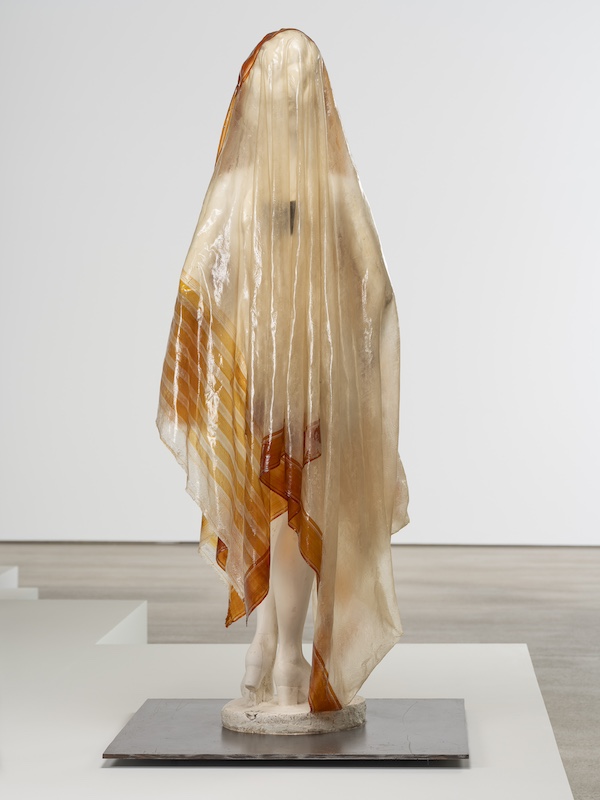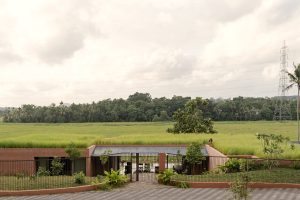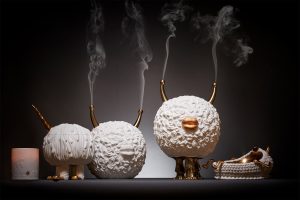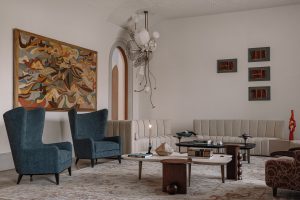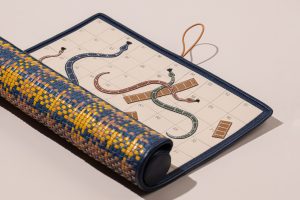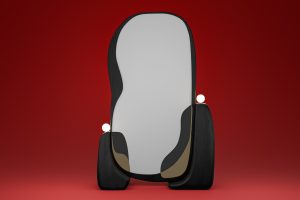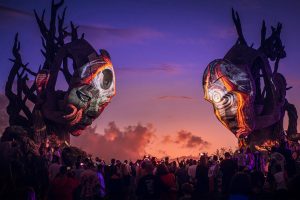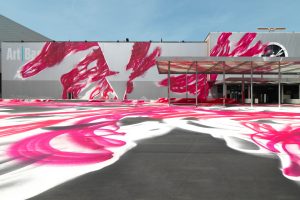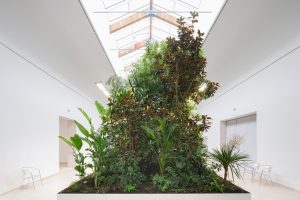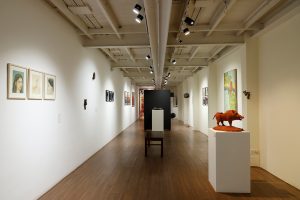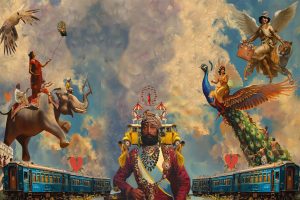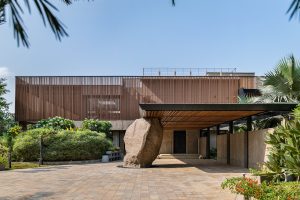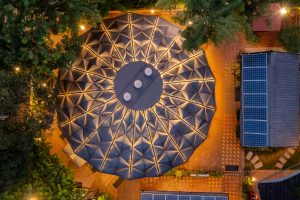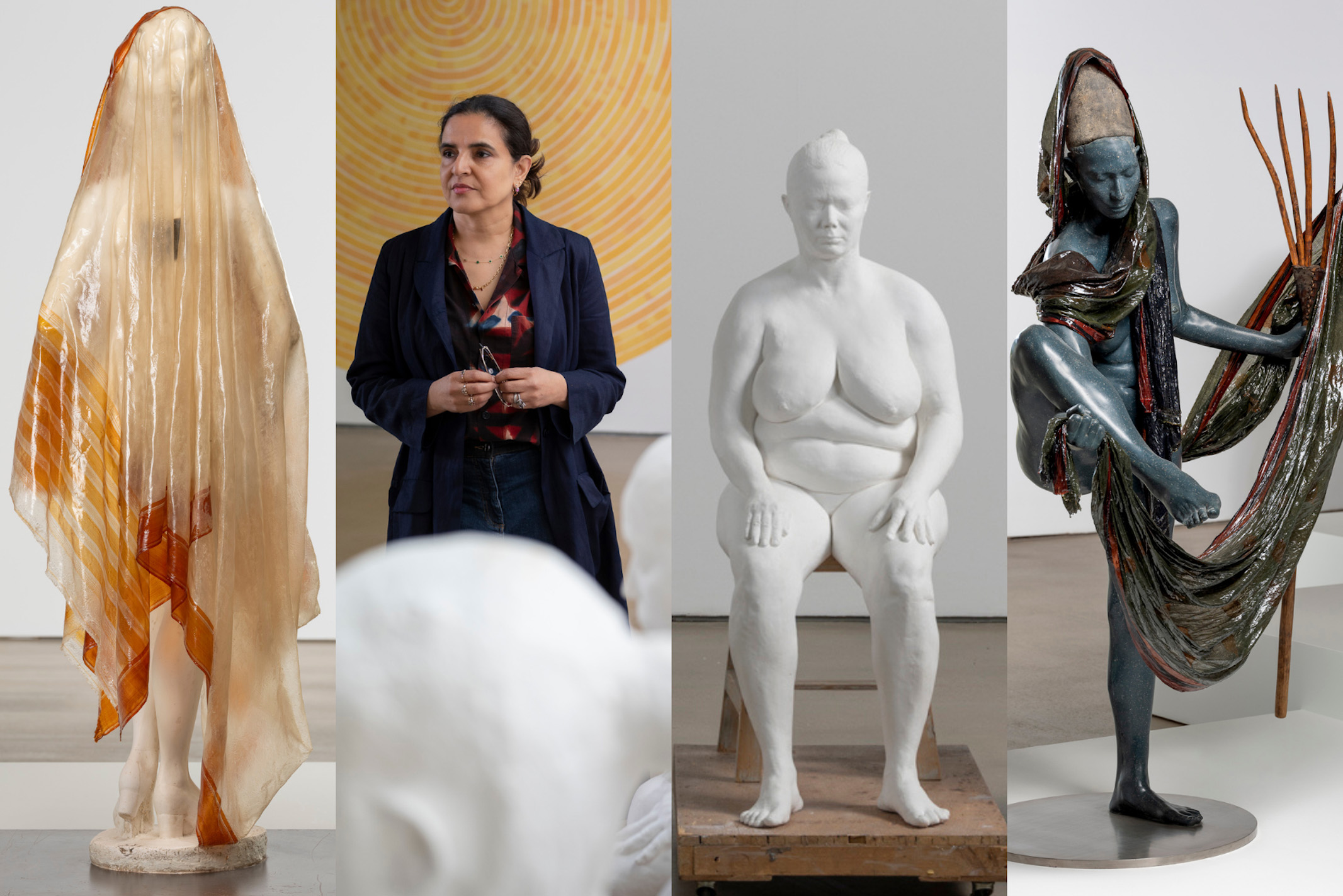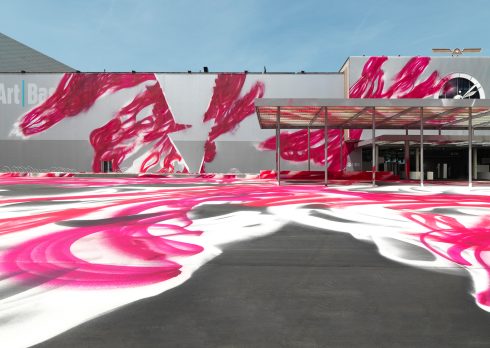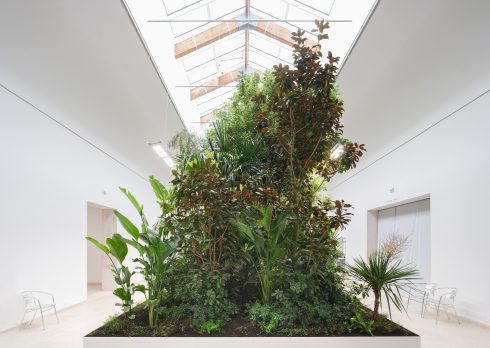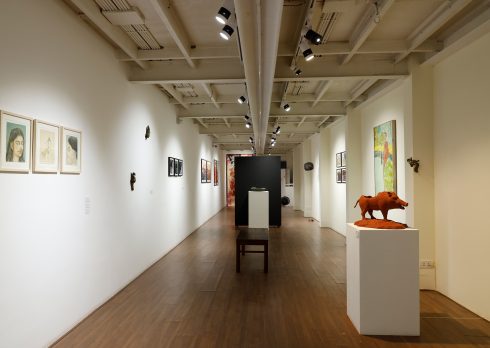Alchemies, A Journey Through Bharti Kher’s Most Ambitious UK Exhibition
In conversation with Bharti Kher on her latest exhibition ‘Alchemies’, her most extensive museum presentation in the UK at the Yorkshire Sculpture Park.
- 20 Aug '24
- 10:32 am by Urvi Kothari
The British-Indian artist describes herself as an ‘outsider’ in both the UK and India. A recipient of acclaimed awards like the Chevalier dans l’Ordre des Arts et des Lettres or the Knight of the Order of Arts and Letters in 2015, and the ARKEN Art Prize in 2010, she is a formidable name in Indian art. Her latest solo titled ‘Alchemies’ explores ideas of metamorphosis that weave throughout her work as she challenges defined readings of objects and identities – such as the binary of man/woman, or other traditionally fixed and hierarchical representations. She presents women as mothers, sex workers, monsters, warriors, and deities, often hybridised with animals or as avatars of the goddess. Her mythical characters blur the boundaries between humankind, nature and narrative, revealing expansive potential and new meaning-making. As she describes these characters as, “part truth, and part fiction, part me, and part you.”
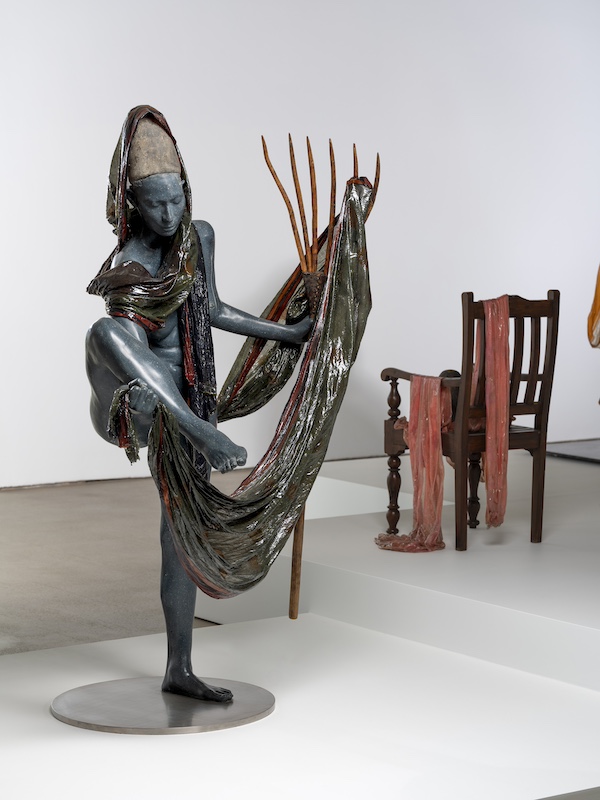
Part-retrospective, part newly commissioned work, Bharti Kher’s exhibition spans Kher’s 24 glorifying years as an artist as she reframes the perspective towards the feminine. Considered one of her most extensive museum presentations to date, Bharti Kher’s hybridised mythical female avatars come alive in the light-filled light of the Yorkshire Sculpture Park. The exhibit addresses timely political issues around identity and gender through Kher’s lens. ‘Alchemies’ poses a strong statement on the notion of time, gender and identity. The exhibition looks into the past by representation of the sari, a single piece of fabric bearing stories of life almost frozen in time metaphorically represented by the act of encasing it beneath a layer of resin. At the same time, installations like ‘Virus’ hold a sense of existentialism as they continue to be in a state of constant flux. In conversation with an alchemist, an animist and an avid magician at play, Design Pataki deconstructs Kher’s idea of the feminine in contemporary arts.
Also read: Six Influential South Asian Women Artists Making A Global Mark
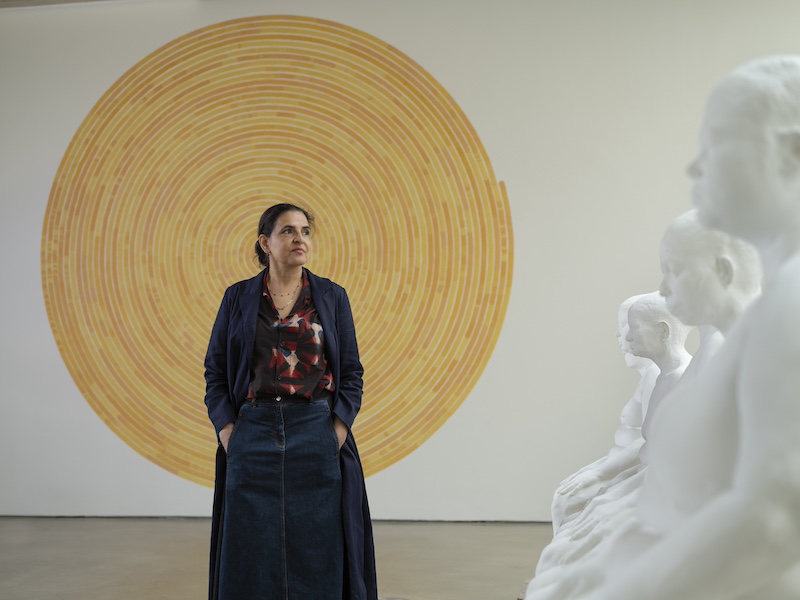
DP: If you had to define the ‘Alchemies’ in a sentence, what would it read as?
BK: This is a show about the magical possibilities of the self and the body that we are given at birth to travel, experience and cross the axis of time and space.
DP: Myth plays an essential role in embodying each feminine hybrid persona. What is the core inspiration behind this metamorphosis at play wherein the real meets the imagined?
BK: Stories and narratives describe our past and promise a continuation of the future. Myths ask us to remember and share ourselves, with all our vulnerabilities with our children so they may learn the truth of living: the hero’s story and poor man’s; the women that walk the sky and the shaman are the magicians that create and push what can be understood as not only human but a universal language.
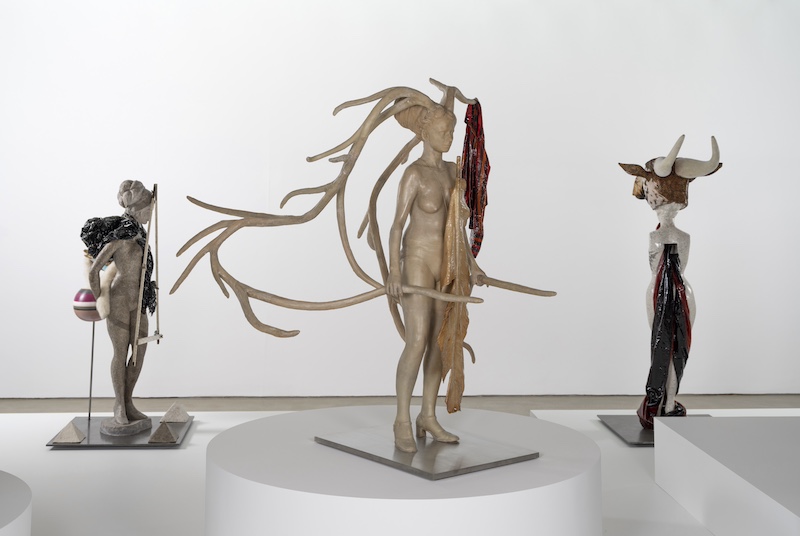
Bharti Kher, Alchemies, installation view at Yorkshire Sculpture Park, 2024. (Image credits: the Artist, Hauser & Wirth, Nature Morte, Perrotin, and Jonty Wilde for Yorkshire Sculpture Park)
DP: A banana leaf representing a shield, a bull’s head be-throned like a jewel, a plastic-like saree draped uncannily. Can you break down your choice of mediums employed to accessorise the feminine?
BK: Materials are tools to create sensations and familiarity with touch and sight. Objects carry memories that I can latch onto and push in other directions. The mind can connect and create simply by suggesting that something is fluid or static around a body. I use so many tricks and ways of presenting material. A lot of this is played out in the studio and then connected to stories I’m building into the works. It helps the work but in the end, none of it matters really because the work has its own life. I don’t believe that there are feminine or masculine materials as such. Glass doesn’t have gender nor does cotton or silk: we just assign our judgements or socio-cultural baggage onto stuff. Men in India and Rome used to wear jewellery and dresses. Women were high priestesses and warriors. The objects I attach to the works are little histories and markers for you to make poems or think around the work.
Also read: The Offbeat Sari Is London’s First Large-Scale Exhibition That Examines The Contemporary Indian Sari
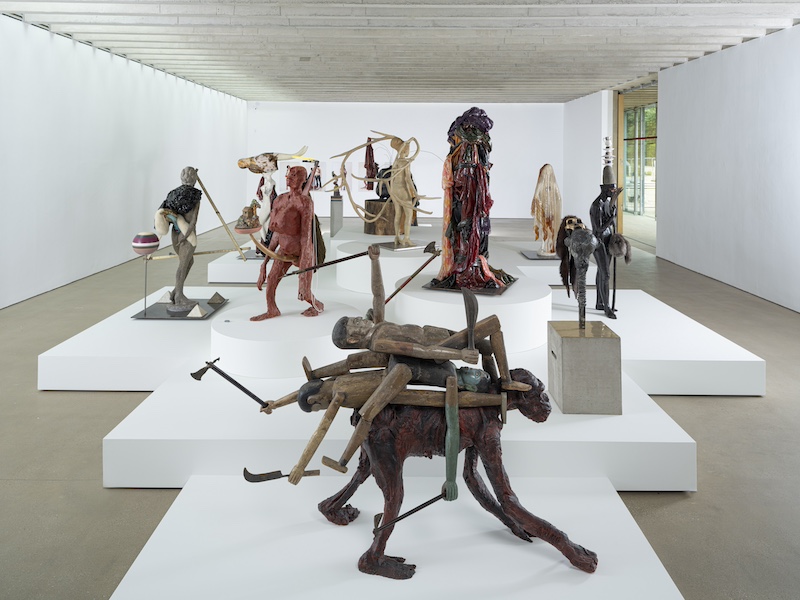
DP: The pieces in the exhibit displace the viewer’s relation to the object with its disquieting aura- sensual, inviting as well as discomforting and monstrous. The show presents a very non-westernised take on presenting the feminine as much more than a passive object of beauty. What are your thoughts on the same?
BK: I think this is a complex question and can’t be answered easily. But I agree that in India the multiplicity of self is something that is easily understood both philosophically and spiritually. That consciousness is a single unified all-encompassing nothing and everything. Theories of everything are not that important you see. You work as much as me. I make it and you also make it. The act of seeing activates the energy art needs. None of us are passive in the spectrum of living. The body is both monstrous and beautiful; male and female; animal and human; dark and light; static and in motion.
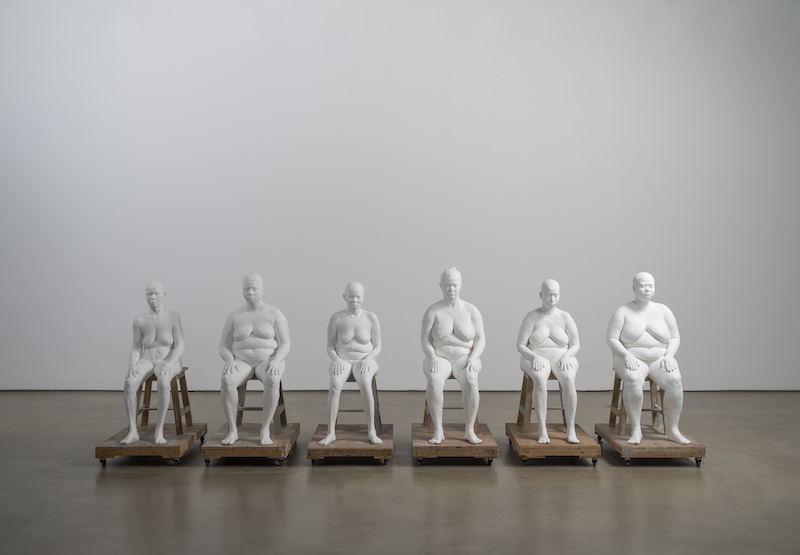
DP: Is there any personal anecdote that you would like to share while you interacted with the ‘six women’ from Kolkata? Can you decode the symbolism behind this extremely defined body language – hands resting on their knees and eyes closed?
BK: The women are all around my age. We met in 2012 through my friend Ruchira Gupta from ‘Apne Aap.’ I wanted to know if the body cast of the sex worker said or spoke something more than the objecthood of the cast. I had recently seen Beethoven’s ‘Death Mask’ and was interested in how the material was thought to carry and transfer; specifically plaster. As a medium that could catch the essence of a person.
And what did that mean? Whether art could answer questions of ethics and exchange. What does exploitation mean? How would we as women financially transact? These women sit, eyes closed, quiet and formidable, inner world intact, the space between them and me became both intimate and macrocosmic at the same time. They are loud and silent at the same time.
Also read: A Closer Look At The Dior Lady Art#5 x Bharti Kher
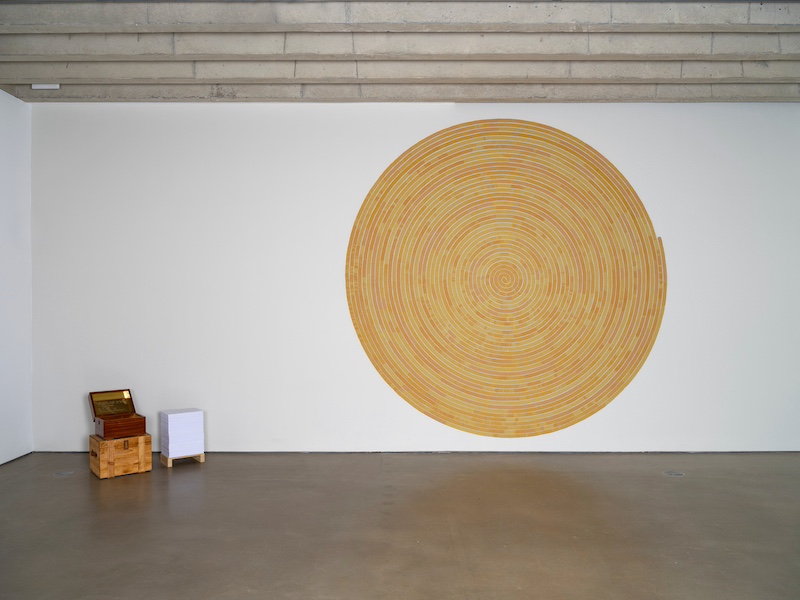
Bharti Kher, Virus XV, 2024. Courtesy of the artist, Hauser & Wirth, Nature Morte and Perrotin. (Image credits: the Artist, Hauser & Wirth, Nature Morte, Perrotin, and Jonty Wilde for Yorkshire Sculpture Park)
DP: As Kher completes one more cycle around the sun, the artwork will grow by one more bindi. Set in a bright sunset yellow palette, ‘Virus’ is yet another classic Bharti Kher spiral of large bindis. Initiated last year and set to be completed in 2039, what does this immaculate in-progress installation signify?
BK: Virus began in 2010 as a project that marked my life really. The journey from being 40 to reaching 70 (if I live). Using the bindis to make a wall work that anyone could make as long as they stuck one bindi after another. I wrote the text over the year of 2010 as a future prediction, and I keep updating it as things occur in the world. The only certainty I have is that I have become a year older. So each year ends with my age. The texts reflect my interests in science and technology, space travel, neurology, anthropology and the environment. Some of the predictions are wild imaginations but most are possibilities.
